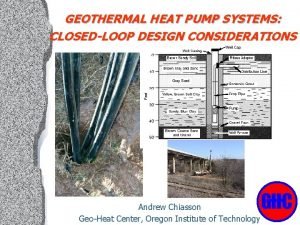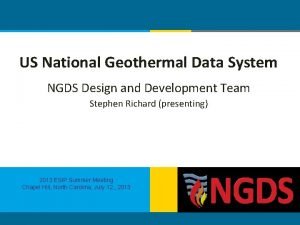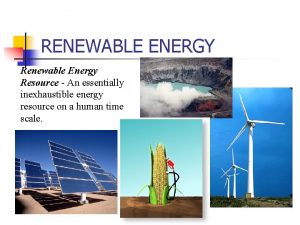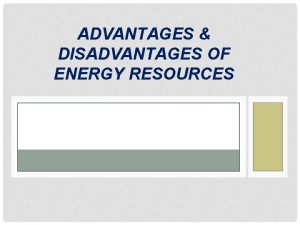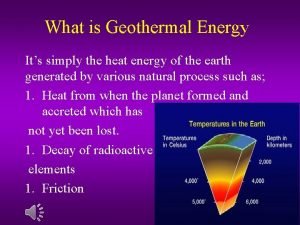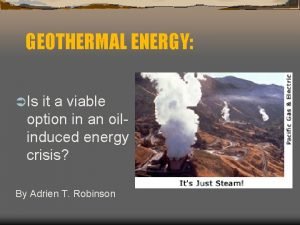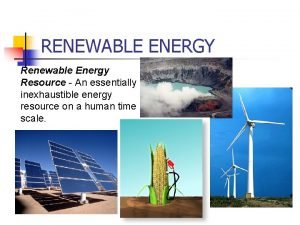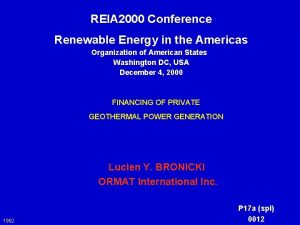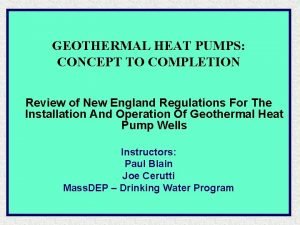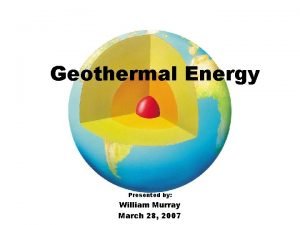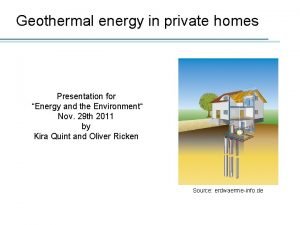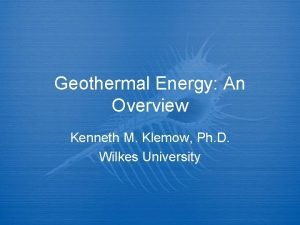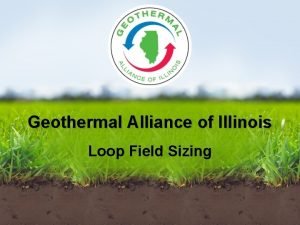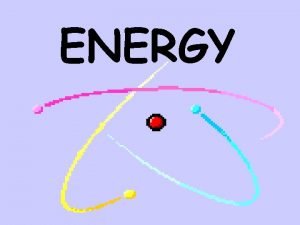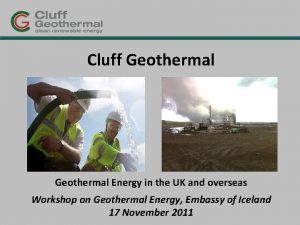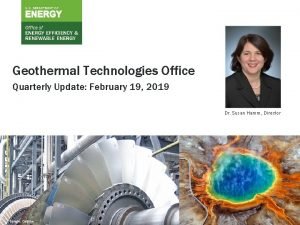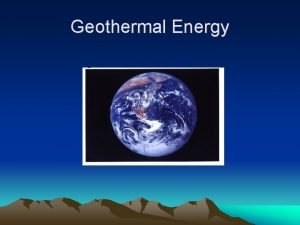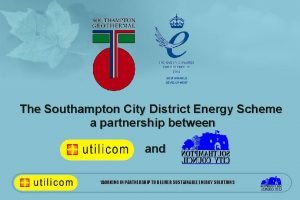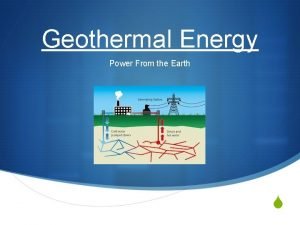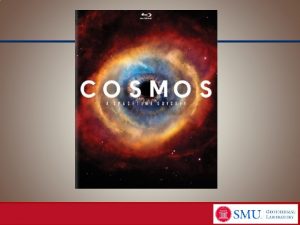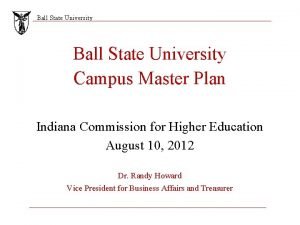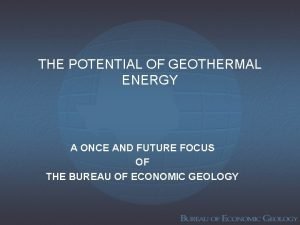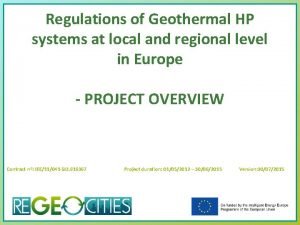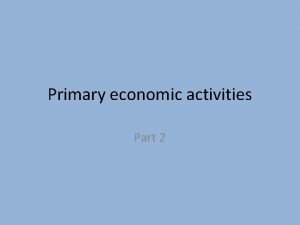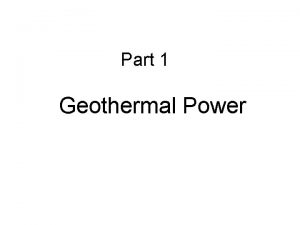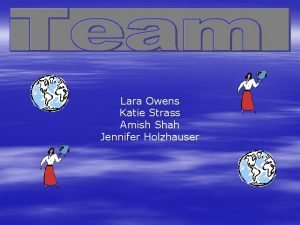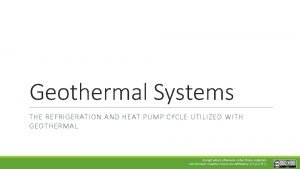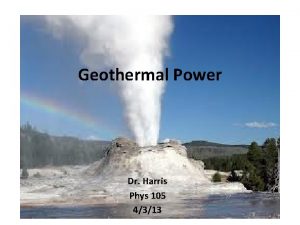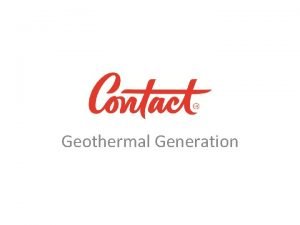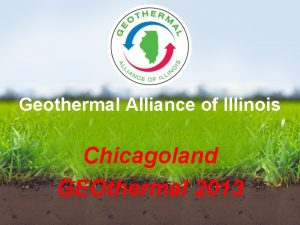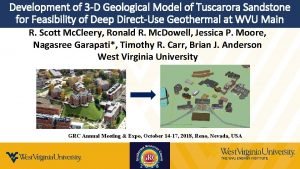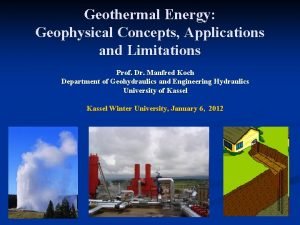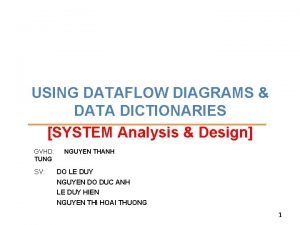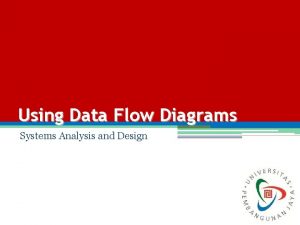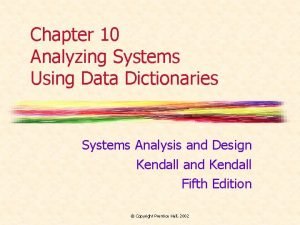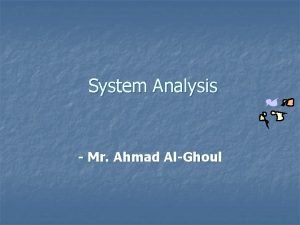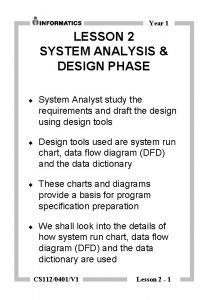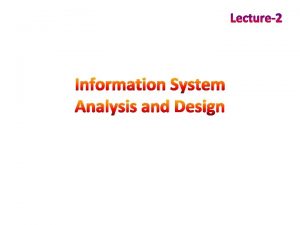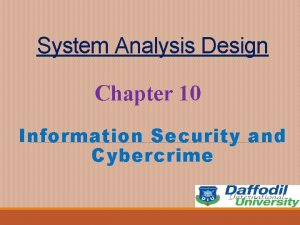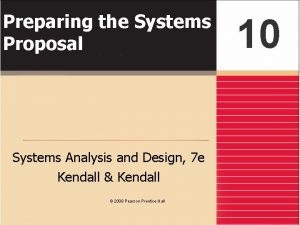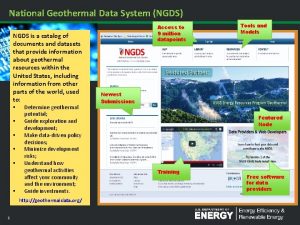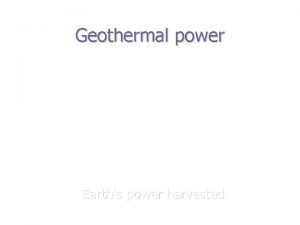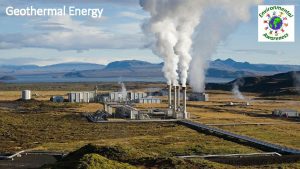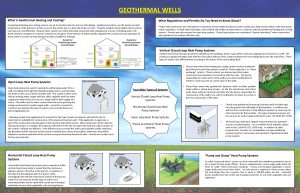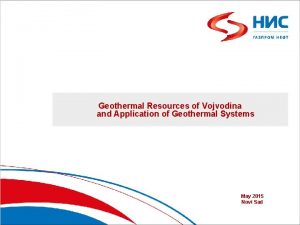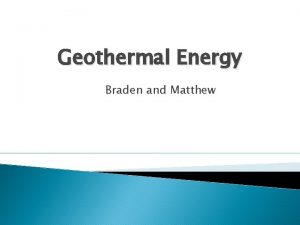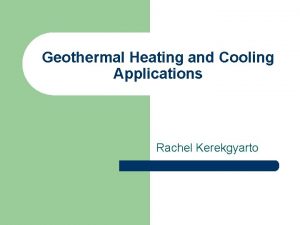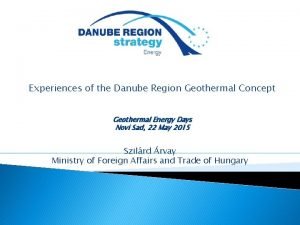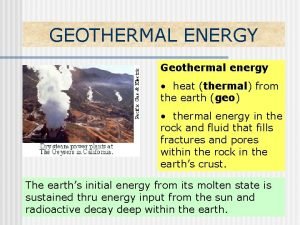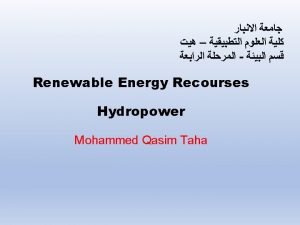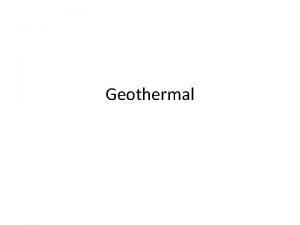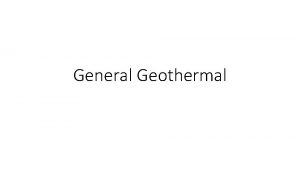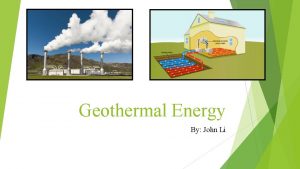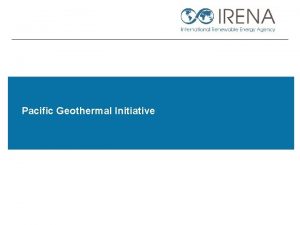US National Geothermal Data System NGDS Design and
























































- Slides: 56

US National Geothermal Data System NGDS Design and Development Team Stephen Richard (presenting) 2013 ESIP Summer Meeting Chapel Hill, North Carolina, July 12, , 2013 Program Name or Ancillary Text eere. energy. gov

Outline • How is it put together – Approach to Data Management – The Domain Steering Committee – Recommended data types • How does it work – Content Models – Interchange formats – Catalog

Overview • NGDS is a data system, not a database – Discover and access geothermal data from many different sources • System is unified by: – Catalog and standardized metadata – Data access protocols and interchange formats (it’s the Web for data)

A distributed data system Users Web services: the connections Catalogs: listings of available resources Data space Data: the World Wide Web as the data store

Data Types EGI Geothermal Sample Library • Three sorts of information: – Data – information about the Earth and geothermal energy systems – Metadata – Information about resources (for discovery, evaluation, access) – Annotation – notes added to by the community (ratings, comments, reviews, usage…)

Outline • How is it put together – Approach to Data Management – The Domain Steering Committee – Recommended data types • How Does it work: information exchanges – Content Models – Interchange formats – Catalog

Domain Steering Committee • Formed to determine data priorities • Represent user community • • Toni Boyd: Geo-Heat Center Oregon Institute Technology: direct use data - national Roland Horne: Stanford University-Stanford Reservoir Engineering Conference papers and research results Joseph Moore: Energy & Geoscience Institute-legacy resource and research data (Chair) Lisa Shevenell: University Nevada, Reno – legacy to recent resource and research data

Domain Steering Committee • Solicit input from experts – Content models – User stories – functionality and data output – Sustainability – future user input • Prioritize data types needed by the geothermal community • Review content models and user stories with DOE invited experts • Provide recommendations to Project Management

Data type recommendations – – – – Well Logging Geochemistry Geophysics Land Status and Ownership Power Plant History Well field Development Costs Geothermal system resource models

Outline • How is it put together – Approach to Data Management – The Domain Steering Committee – Recommended data types • How does it work – Content Models – Interchange formats – Catalog

Data Interoperability Tiers • Tier 1: unstructured content in files – Text, images, graphics files – MS Word, Adobe Acrobat, Illustrator, TIFF…. • Tier 2: Structured data, custom formats – May be accessed in files or via services – Excel, Microsoft Access, dbf, xml… • Tier 3: Information Exchange: – Structured data in standard schema and encoding – Deliver via web service, or in file. Tier 1 Tier 2

Being part of the system • Any Tier: Resource is described by metadata in the system catalog • Tier 1– File accessible on the Web • Tier 2– Structured, user does data integration – need to document data format • Tier 3 – Structured, provider does data integration – mapped to community interchange scheme – provider has to validate format

The Catalog Services: structured data discovery and access Catalog: registry of available resources Data space Data: the World Wide Web as a file system

Metadata Content Model • Title • Extent – Geographic – Vertical – Temporal • Access instructions • Description • Keywords • Originator(s) • Date • Resource ID • • Access constraints Language Quality Lineage Citation Distribution contact Metadata � � Date Contact Specification Identifier Online document: http: //lab. usgin. org/profiles/doc/metadata-content-recommendations

Metadata Interchange • Standard interchange format: USGIN Profile for ISO 19139 metadata (XML) …

Metadata cloud • NGDS portal – access point for geothermal community NGDS portal • NGDS aggregator: collect metadata for all NGDS resources • Metadata contributors Other portals

Metadata Repository Tool • Generate and manage metadata • Registry of resources • Upload capability • Django/Node. JS implementation

Search Client Uses CSW interface

Arc. GIS CSW Client

Display map in Arc. Map

Tier 3: Information Exchanges • Conventions for how information will be sent between computers <whm: facility. Type>Well</whm: facility. Type> – Designed for consumption by computer software • Content Model: – Defines the information content – Data schema – May be implemented with various encoding formats • Encoding formats – HTML, XML, JSON, Net. CDF, TIFF, JPG… facility. Type: “Air-cooled binary plant”

Content Models (Tier 3) • Active Fault/Quaternary Fault • Aqueous Chemistry • Borehole Temperature Observation Feature • Direct Use Feature • Fault Feature • Fluid Flux Injection and Disposal • Geologic Contact Feature • Geologic Unit Feature • Geothermal Area • Geothermal Fluid Production • Geothermal Power Plant • Heat Flow • Heat Pump Facility • • • • Lithology Interval Log Feature Metadata Physical Sample Powell Cummings Geothermometry Power Plant Production Radiogenic Heat Production Seismic Event Hypocenter Thermal Conductivity Thermal/Hot Spring Feature Volcanic Vents Well Fluid Production Well Header Well Log Observation Well Test Observations

Delivery Platform • File download – simple Web link that results in a file download – no support for understanding content – little or no automation is possible • Web application – User-driven computer program, run in client browser – form-based querying, browser-based visualization – may offer file downloading (clip and ship, query results…) • Web Service – computer program executes requests sent via the World Wide Web – Interface for machine to machine interaction – Execute filtering or processing of data on server side

Tiers and delivery platforms File download Web application Web service Tier 1 Tier 2 Tier 3 X X X X

Data Delivery Platform: web services OGC Services -- Useful in Existing Applications • WMS for providing a symbolized portrayal of vector data • WFS for full access to attributes and to download vector data • WCS for access to continuous raster data

Consistent map legends OOOPS! Arizona Geological Survey 7/12/2011

Protocol – Web Feature Service (WFS) • Open Geospatial Consortium Web Feature Service – Standard, structured encoding of content – Each feature defines content model (xml schema) • Feature service – – designed for data access based on features (representation of geolocated entity with attributes)

WFS example-Interchange format

USGIN URI redirect URIs dereference to one or more online representation of each resource. Examples: http: //resources. usgin. org/uri-gin/isgs/well/API: 120010005200/ http: //resources. usgin. org/uri-gin/isgs/welllog_tif/120010010800_ies/ Create URI: • Concatenate: – the redirect host path: ‘http: //resources. usgin. org/uri-gin/’ – naming authority for the data provider (i. e. , azgs, cadoggr, nhgs) – token, specific to the dataset (i. e. , bhtemp, welllog, drillstemtest) – unique identifier for each record

Tools Schema Repository • Registry/repository • Field descriptions from schema annotation • Links to Excel workbook view • Links to XSD • Versions • Link to example instances

Conclusions • The World Wide Web is the file system and data repository • Resources include: – Structured and unstructured data in files (most of the content) – Standardized structured data accessible through web services (metadata and some data) • Information exchange specifications: – Conventions for content model and encoding enable applications to work with multiple data sources

Discussion • USGIN: – Community for developing Geoscience Information Exchanges – Metadata exchange is most important • Majority of content is unstructured documents • Challenge: what is value proposition for ‘long tail’ information exchanges

Thank You The Geysers

Intentionally blank • Begin extra slides

Approach to Data Management • Use WWW infrastructure, Open Geospatial Consortium (OGC) services, ISO standards • Simple interchange formats • Tiers of interoperability

NGDS_Resource + + item. URI : any. URI item. Type : term source : long. Text related. Item : link [0. . *] +subject 1 +documentation NGDS_Data. Resource + + item. Name : text item. Description : text [0. . 1] +annotation Metadata 1. . * Annotation 0. . *

NGDS_Data. Resource + item. Name : text + item. Description : text [0. . 1] Tier 2, 3 NGDSdata. Item + other. ID : text [0. . *] Location +position + shape : geometry 1 Geologic. Feature +member Dataset Tier 1 Unstructured. Resource 1. . * Feature Observation 1 + label : short. Text + symbol : text Feature. Of. Interest Facility + + feature. Of. Interest. Name : text feature. Of. Interest. URI : any. URI procedure : long. Text observation. Date : date. Time Sampling. Feature

Catalog system issues • How to manage metadata – Various streams for importing – Management system based on conceptual model • Metadata for machines– connect user to services inside of their user environment – Requires machine-actionable links • Document and file searching should be done with standard search engines


Domain Steering Committee Members – Toni Boyd: Geo-Heat Center Oregon Institute Technology: direct use data - national – Roland Horne: Stanford University-Stanford Reservoir Engineering Conference papers and research results – Joseph Moore: Energy & Geoscience Institute-legacy resource and research data (Chair) – Lisa Shevenell: University Nevada, Reno – legacy to recent resource and research data

Search interfaces • Catalog -- for data discovery • Collection of consistent metadata describing network resources • Tested various catalog service implementations; • Current interface is ESRI Geoportal (http: //catalog. geothermaldata. org/geoportal)

AASG Geothermal data • Catalog file-based resources in repositories • Simple feature (flat file) schema – 27 content models • More on the way – • http: //geothermaldata. org The goal is simple, really….

turn this….

…. into this NERC 2008

USGIN Catalog Implementation Why a Geoportal Catalog? • Allow a variety of metadata creation methods to be aggregated • Allow distributed metadata records to be aggregated: harvesting between catalogs • Provide a consistent interface for searching and retrieving metadata records: CSW Metadata Wizard Another Catalog Document Repository Excel Template XML in Web. Accessible Folder Geoportal Catalog • Why ESRI’s Geoportal Server? • Geonetwork was too hard • They made it open source! Arizona Geological Survey 7/12/2011 Another Catalog

Wells: data requirements • Links to related information: – Log and well data to geographic location – From well to all related data: drilling records, daily reports, well maintenance, costs, sundry notices, regulatory filings, all logs, time lines…. – Technical papers to well locations • 3 -D geometry of well bore • History of well (drilling, completion, production, rework, repurpose, abandonment…) • Solution: Interchange formats for well, borehole temperature obs, well log obs, lithology interval obs, fluid production/ injection/disposal, tests…; related resource links

Geothermal fluid characterization Property: Approach Reservoir temperature Temperature logs Fluid composition Aqueous geochemistry obs Fluid production obs Fluid origin, age, mixing No data yet Direction of fluid movement No data yet Steam fraction Aqueous geochemistry obs Well Testing B. Evans 2011 J. Lovekin, Geotherm. Ex, Inc. 2010

Aqueous Geochemistry • Analytical data for geothermometry, Piper and triangular diagrams: – Need time of sampling information – Content model based on Powell and Cummings (rev 2010) spreadsheet • Solution: Geochemistry interchange formats • Access to relational database with exhaustive data compilation: Tier 2 Raft River Chemistry files Cathy Janik with a miniseparato

Geophysical data types • Gravity, magnetic, resistivity… Continuously varying coverage • Data model is simple: X, Y, Z, value • Data represented using numeric arrays (grids). Solution: Web Coverage Service, Open. DAP/Net. CDF Photo by P. Wannamaker Magnetotelluric model of Raft River (Maris and others, 2012) • Commonly accessible as an image of a data visualization • Need to georeference these data visualizations to put in context: Solution: Web Map Services Magnetotelluric (MT) Surveys

Other Data • Geologic Maps – Rock unit distribution – Location, orientation of contacts and faults – Solution: Geo. Sci. ML feature services and map services • Infrastructure – Land ownership: Parcel maps; under stewardship of various land agencies – Power lines, transportation, water… – Solution: services from other agencies (Western Regional partnership, USGS and others)

Metadata: Strong Conventions • Minimum metadata content recommendations

Other Portals Can. GEA portal

Protocol: Web Map Service (WMS) • Simple, widely used, many clients • Access to georeferenced map image • Servers – Map. Server, Geo. Server, Deegree, Arc. GIS • Data integration = agreeing on standard portrayal schemes (legends)

WMS for well headers

Geologic Map

What does Interoperability mean? … the ability of diverse systems and organizations to exchange information and use the information that has been exchanged… To me this means that when I want data: • I always know how to ask for it • I always know the format in which I’ll receive it • I always know what it means
 Geothermal horizontal loop design
Geothermal horizontal loop design Geothermal data repository
Geothermal data repository Solar energy diagram
Solar energy diagram Saas architecture
Saas architecture Geothermal energy advantages and disadvantages
Geothermal energy advantages and disadvantages The rarest and oldest type of geothermal power plant
The rarest and oldest type of geothermal power plant Geothermal pro and cons
Geothermal pro and cons Geothermal education and training
Geothermal education and training System design input and output
System design input and output Geothermal desuperheater
Geothermal desuperheater Biomass advantages
Biomass advantages Advanteges of wind power
Advanteges of wind power Geothermal energy distribution
Geothermal energy distribution Closed loop geothermal well massachusetts
Closed loop geothermal well massachusetts Geothermal
Geothermal Geothermal energy presentation
Geothermal energy presentation Geothermal education office
Geothermal education office Geokiss
Geokiss Energy transformation example
Energy transformation example Cluff geothermal
Cluff geothermal Objectives of landforms
Objectives of landforms Geothermal technologies office
Geothermal technologies office Uses of geothermal energy
Uses of geothermal energy Cal energy geothermal
Cal energy geothermal Pangangalaga sa likas na yaman
Pangangalaga sa likas na yaman Southampton geothermal heating company ltd
Southampton geothermal heating company ltd Geothermal enery
Geothermal enery Hudson ranch geothermal jobs
Hudson ranch geothermal jobs Geothermal energy definition
Geothermal energy definition Smu geothermal
Smu geothermal Ball state geothermal
Ball state geothermal Geothermal energy kinetic or potential
Geothermal energy kinetic or potential Brochure about geothermal energy
Brochure about geothermal energy Ireland geothermal energy
Ireland geothermal energy Parts of geothermal power plant
Parts of geothermal power plant Jennifer holzhauser
Jennifer holzhauser Geothermal heat pump cycle
Geothermal heat pump cycle Geothermal power
Geothermal power Ohaaki power station
Ohaaki power station Dry steam geothermal power plant
Dry steam geothermal power plant Chicagoland geothermal
Chicagoland geothermal Geothermal cooling tuscarora
Geothermal cooling tuscarora Geodh
Geodh Geothermal meaning
Geothermal meaning Solar energy defination
Solar energy defination National unification and the national state
National unification and the national state User interface design in system analysis and design
User interface design in system analysis and design Dialogue design
Dialogue design Data dictionary in dfd
Data dictionary in dfd Data flow diagram in system analysis and design
Data flow diagram in system analysis and design Data dictionary system analysis and design
Data dictionary system analysis and design Data dictionary example in system analysis and design
Data dictionary example in system analysis and design What is data dictionary in system analysis and design
What is data dictionary in system analysis and design Nine characteristics of system
Nine characteristics of system System security in system analysis and design
System security in system analysis and design System proposal in system analysis and design
System proposal in system analysis and design Technical feasibility example
Technical feasibility example
